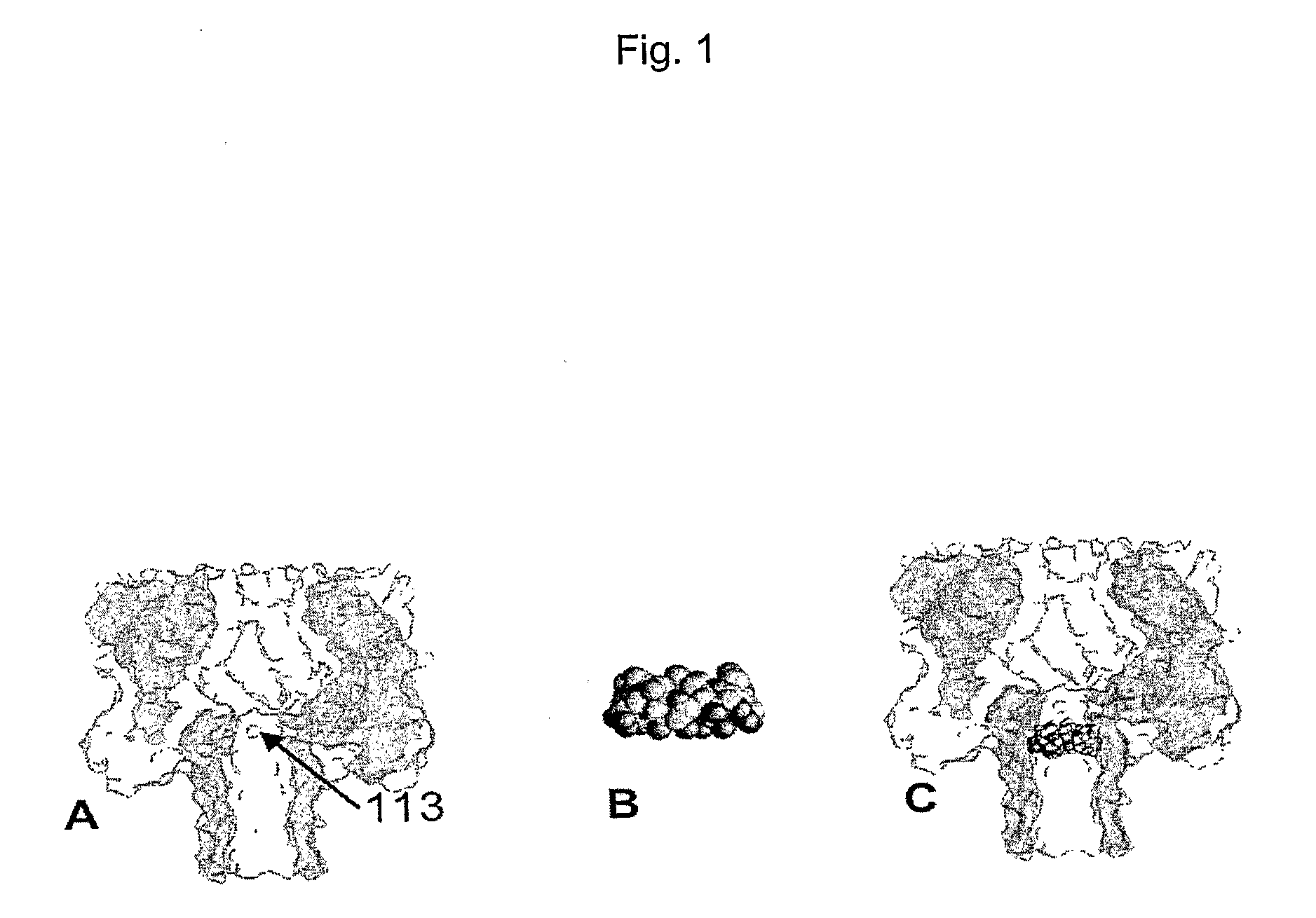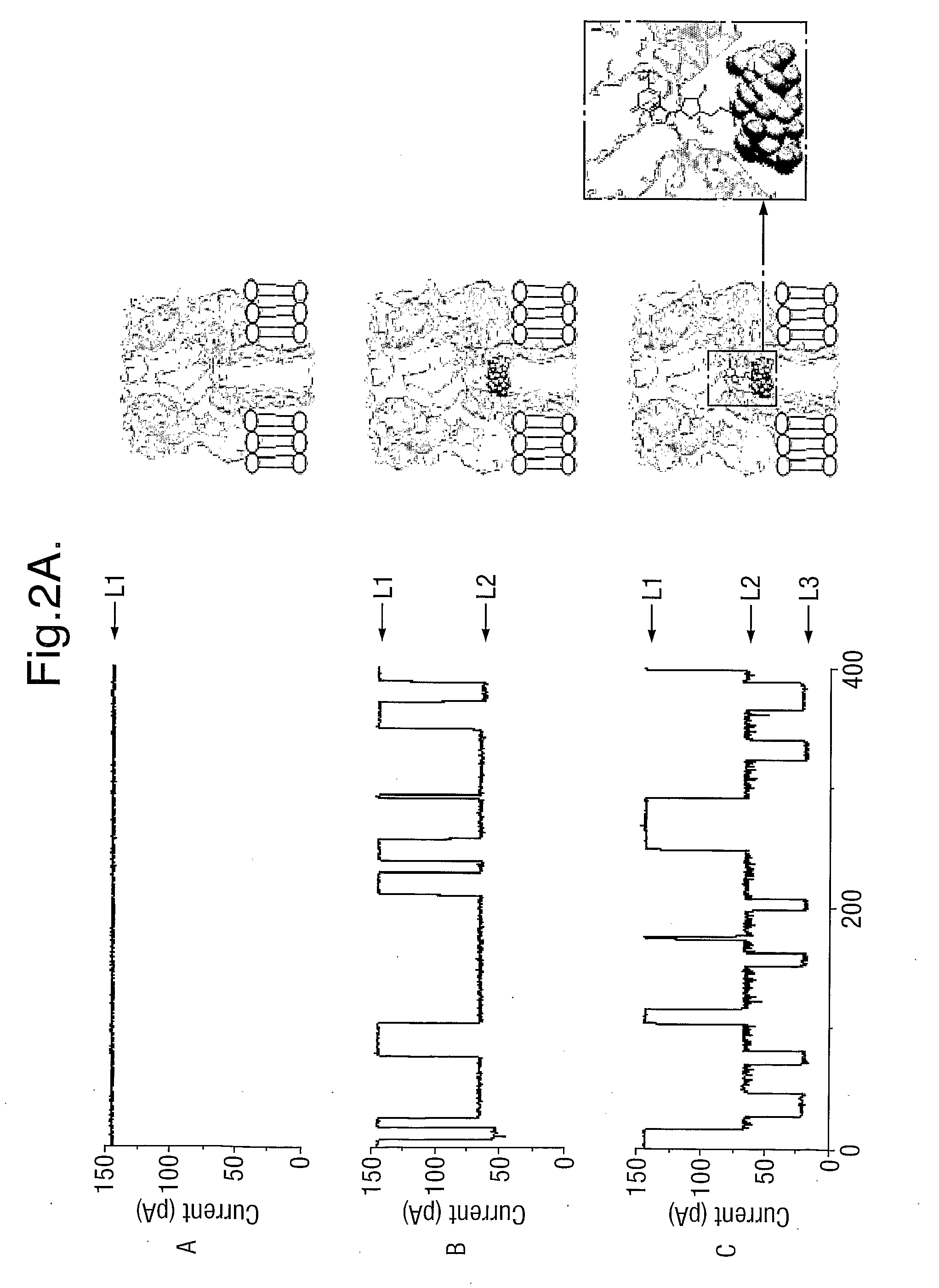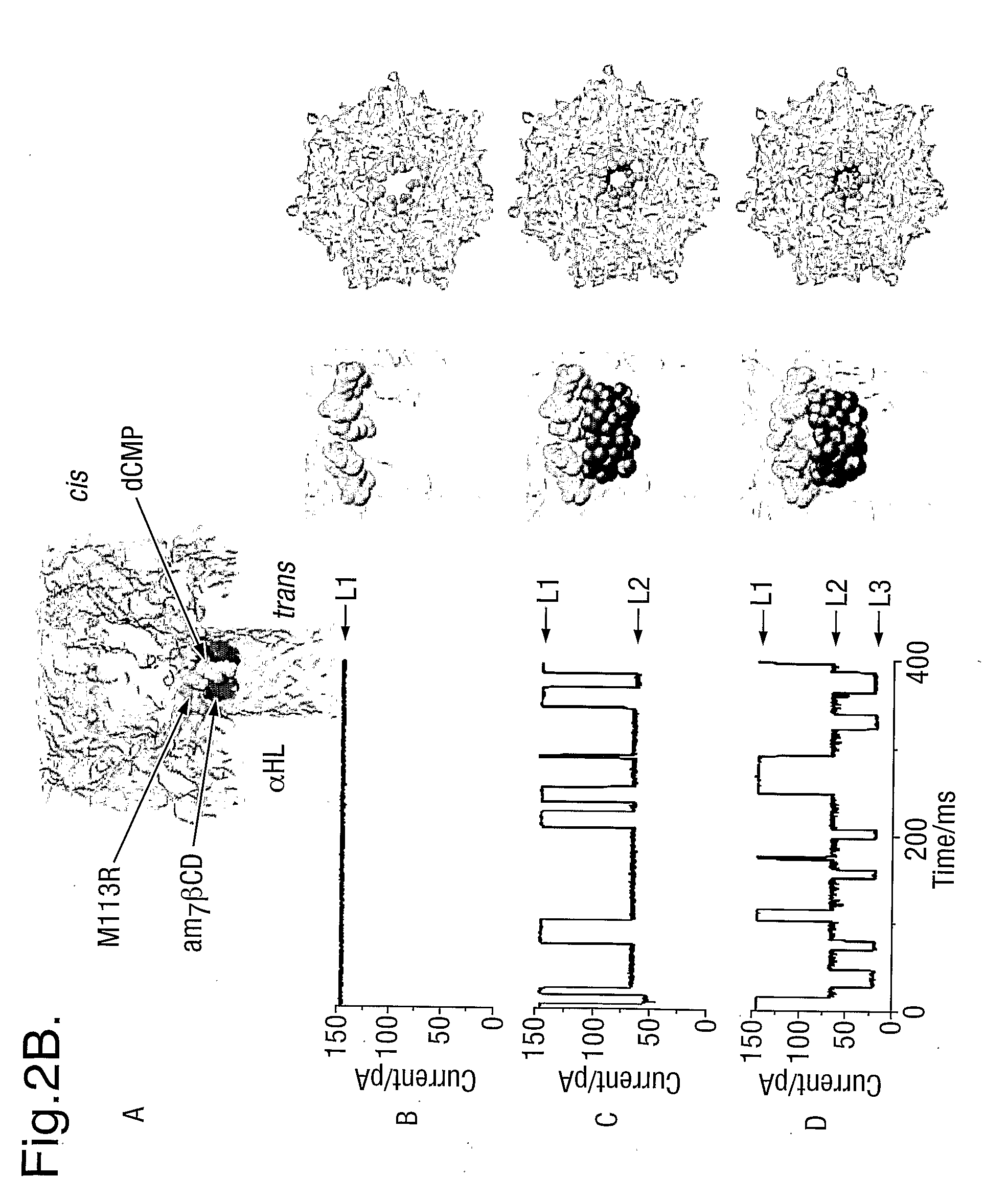Methods Using Pores
- Summary
- Abstract
- Description
- Claims
- Application Information
AI Technical Summary
Benefits of technology
Problems solved by technology
Method used
Image
Examples
example
[0104]In order to bring the size of the ionic conducting path of the α-hemolysin (M113R)7 mutant (FIG. 1A) closer to the size of the nucleotide to be detected, the diameter of the nanopore was reduced by fitting a cyclodextrin near the constriction of the pore. The heptakis-6-amino-β-cyclodextrin (am7-βCD) (FIG. 1B), which has seven amino groups in the primary positions, was used. When the cyclodextrin is inside the pore (FIG. 1C), in conjunction with the seven arginines in position 113 on the protein mutant, one ring of seven amino groups on one side, and a second ring of seven arginine groups are present within a short distance from each other in the narrowest area of the passage through the pore. This amino / arginine ring structure has the property of binding phosphate groups reversibly thus immobilising the XMP and dXMP in the pore for 5 to 30 ms. These binding events are clearly detectable through the resulting change in current amplitude.
1. Material and Methods
[0105]α-hemolysin...
PUM
 Login to View More
Login to View More Abstract
Description
Claims
Application Information
 Login to View More
Login to View More - R&D
- Intellectual Property
- Life Sciences
- Materials
- Tech Scout
- Unparalleled Data Quality
- Higher Quality Content
- 60% Fewer Hallucinations
Browse by: Latest US Patents, China's latest patents, Technical Efficacy Thesaurus, Application Domain, Technology Topic, Popular Technical Reports.
© 2025 PatSnap. All rights reserved.Legal|Privacy policy|Modern Slavery Act Transparency Statement|Sitemap|About US| Contact US: help@patsnap.com



